Discover 11 hidden attractions, cool sights, and unusual things to do in Lulworth (United Kingdom). Don't miss out on these must-see attractions: Durdle Door, Lulworth Estate, and Fossil Forest. Also, be sure to include Hambury Tout in your itinerary.
Below, you can find the list of the most amazing places you should visit in Lulworth (England).
Table of Contents
Durdle Door
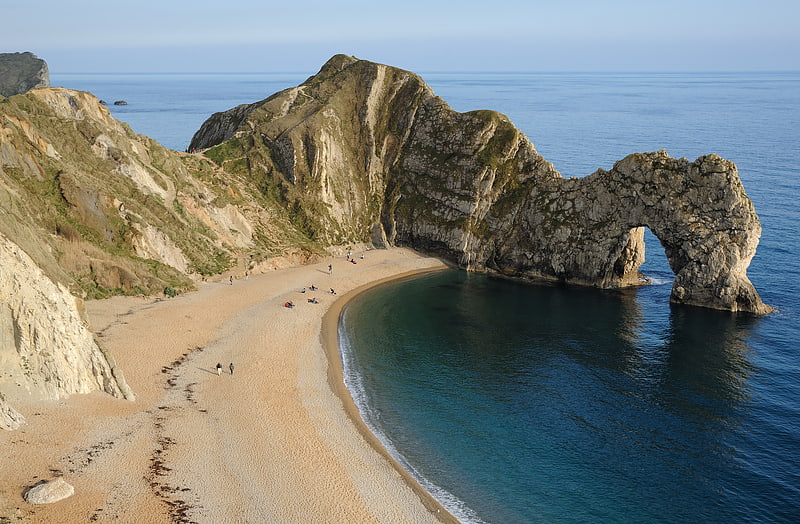
Natural limestone arch and iconic photo op. Durdle Door is a natural limestone arch on the Jurassic Coast near Lulworth in Dorset, England. Although privately owned by the Lulworth Estate, it is open to the public.[1]
Address: Lulworth Car Park, Lulworth
Lulworth Estate
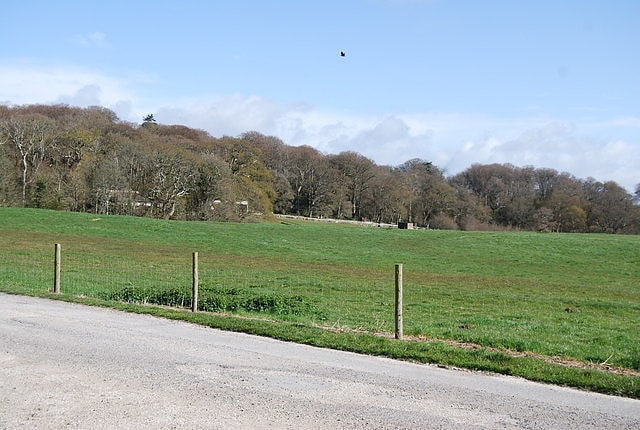
Tourist attraction in East Lulworth, England. The Lulworth Estate is located in central south Dorset, England. Its most notable landscape feature include a five-mile stretch of coastline on the Jurassic Coast. Part of the area is a World Heritage Site.
The historic estate includes the Lulworth Castle and Park. The landscaped gardens are Grade II listed in the National Register of Historic Parks and Gardens. The castle was residence to the Weld family until 1929 when it was ravaged by fire.
The 12,000 acre estate is predominantly owned by the Weld family, who have lived there for several generations. The Lulworth Estate was once part of a grander estate under Thomas Howard, 3rd Viscount Howard of Bindon.[2]
Fossil Forest
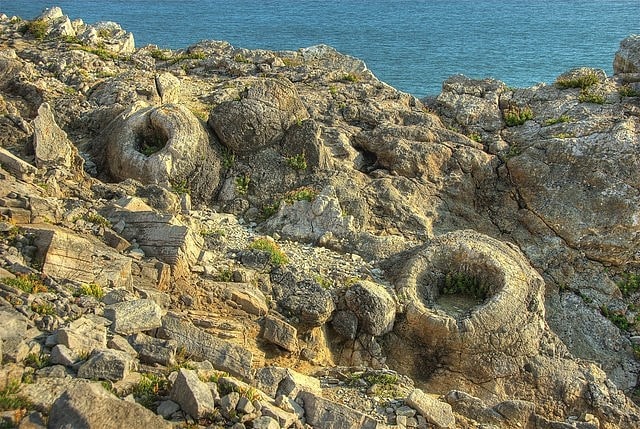
Tourist attraction in England. The Fossil Forest is the remains of an ancient submerged forest from Jurassic times, located to the east of Lulworth Cove on the Isle of Purbeck in Dorset, England. It lies on the Jurassic Coast, on a wide ledge in the seaside cliff. The site is within the Lulworth Ranges and thus has restricted access. Parts of forest can also be seen on the Isle of Portland and in quarries near the town of Weymouth to the west.[3]
Hambury Tout
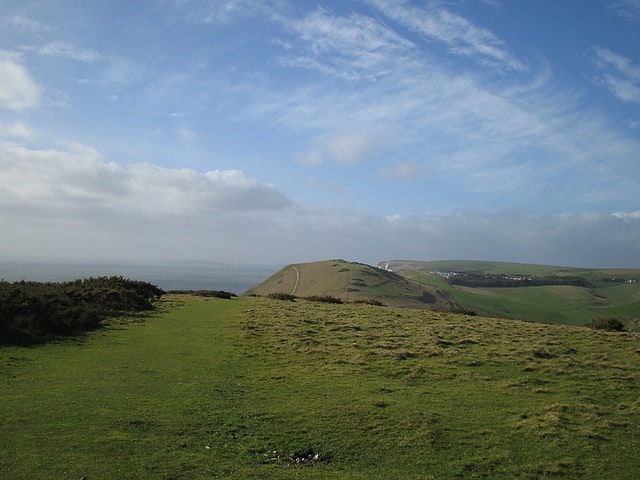
Hambury Tout is a large chalk hill by the coast near Lulworth, Dorset, England. It overlooks Lulworth Cove to the west. Hambury Tout is the site of an ancient burial mound.[4]
Lulworth Castle
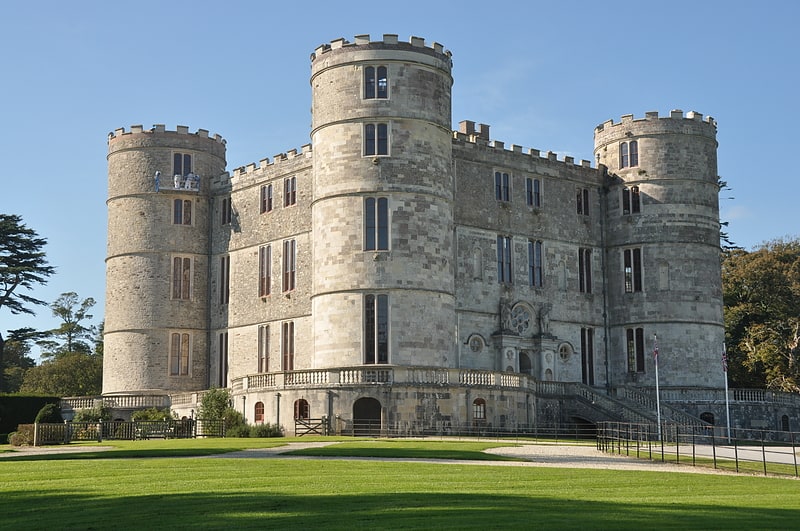
Castle in East Lulworth, England. Lulworth Castle, in East Lulworth, Dorset, England, situated south of the village of Wool, is an early 17th-century hunting lodge erected in the style of a revival fortified castle, one of only five extant Elizabethan or Jacobean buildings of this type. It is listed with Historic England as a Scheduled monument. It is also Grade I listed. The 18th-century Adam style interior of the stone building was devastated by fire in 1929, but has now been restored and serves as a museum. The castle stands in Lulworth Park on the Lulworth Estate. The park and gardens surrounding the castle are Grade II listed with Historic England.[5]
Address: East Lulworth, Lulworth
Scratchy Bottom
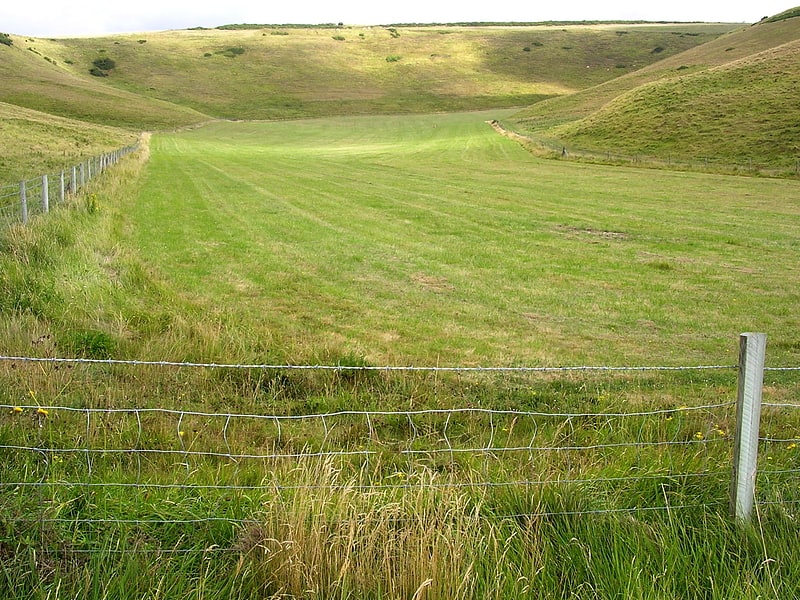
Scratchy Bottom is a clifftop valley between Durdle Door and Bat's Head in Dorset, England. A dry valley in the chalk, it is surrounded by farmland at its sides and landward end, with cliffs at the seaward end.
The name is thought to refer to a rough hollow. Scratchy Bottom has been noted for its unusual place name. The location came second after Shitterton, also in Dorset, in a 2012 poll for "Britain's worst place name" carried out by the genealogy website Find My Past.
Scratchy Bottom was the location for the opening of the 1967 film Far from the Madding Crowd, in a scene in which Gabriel Oak's sheep are driven over a cliff by his sheepdog.[6]
Flower's Barrow
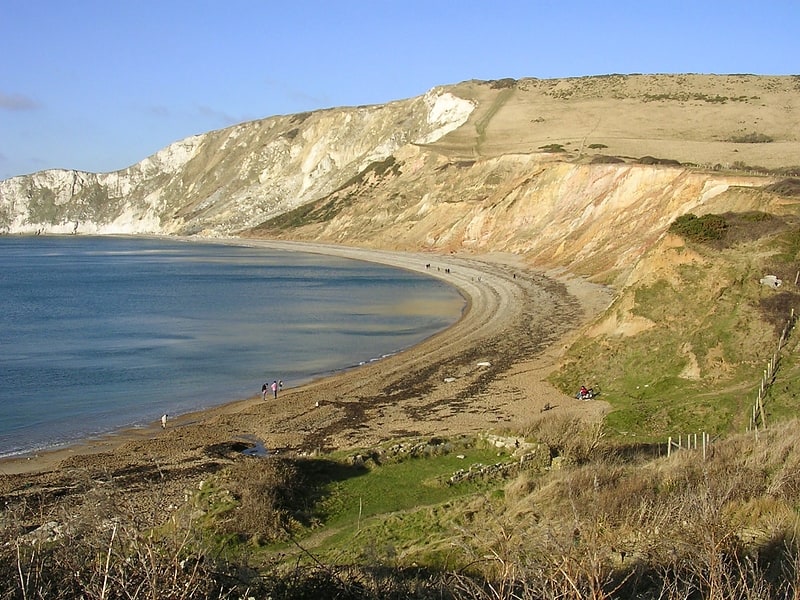
Historical landmark in England. Flower’s Barrow is an Iron Age hillfort, built over 2500 years ago, above Worbarrow Bay in Dorset on the south coast of England.[7]
Bindon Hill
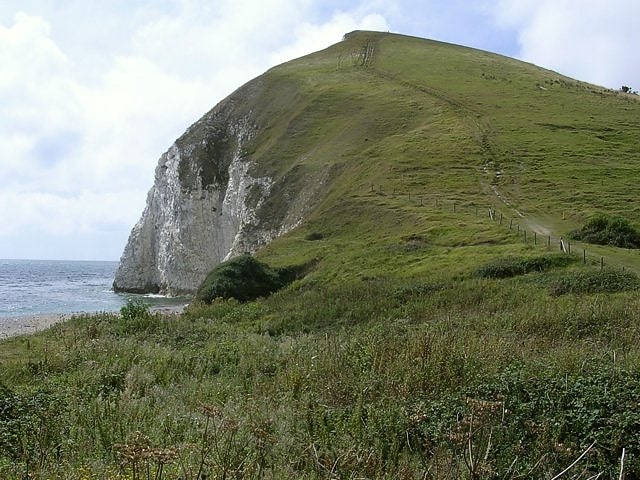
Bindon Hill is an extensive Iron Age earthwork enclosing a coastal hill area on the Jurassic Coast near Lulworth Cove in Dorset, England, about 19 kilometres west of Swanage, about 6 kilometres south west of Wareham, and about 17 kilometres south east of Dorchester. It is within an Area of Outstanding Natural Beauty.[8]
Worbarrow Tout
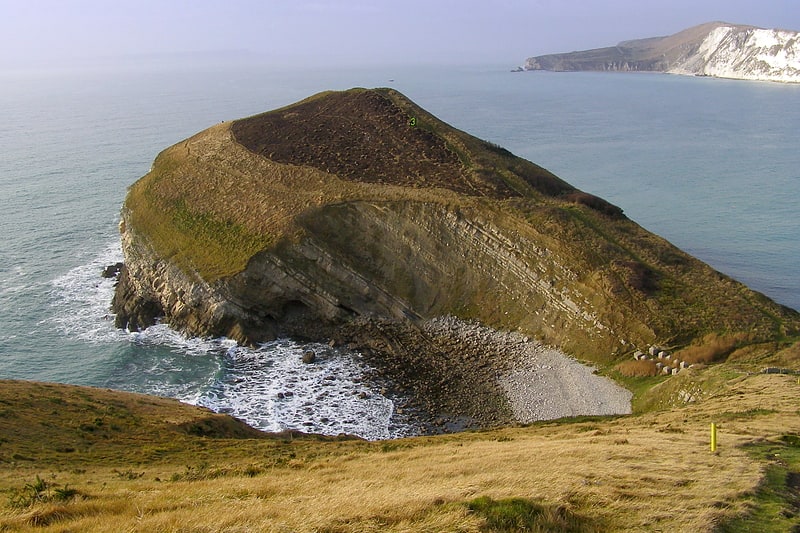
Worbarrow Tout is a promontory at the eastern end of Worbarrow Bay on Isle of Purbeck in Dorset on the south coast of England, about 6 kilometres south of Wareham and about 16 kilometres west of Swanage. Immediately to its east is Pondfield Cove.
Worbarrow Tout ("tout" means lookout) was originally part of Gad Cliff to its east, but sea erosion has virtually separated the two completely.[9]
Lulworth Cove
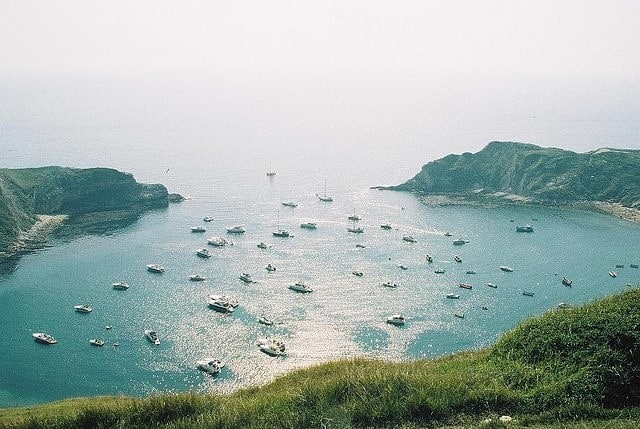
Sheltered bay with an unusual formation. Lulworth Cove is a cove near the village of West Lulworth, on the Jurassic Coast in Dorset, southern England. The cove is one of the world's finest examples of such a landform, and is a World Heritage Site and tourist location with approximately 500,000 visitors every year, of whom about 30 per cent visit in July and August. It is close to the rock arch of Durdle Door and other Jurassic Coast sites.[10]
Chaldon Hill
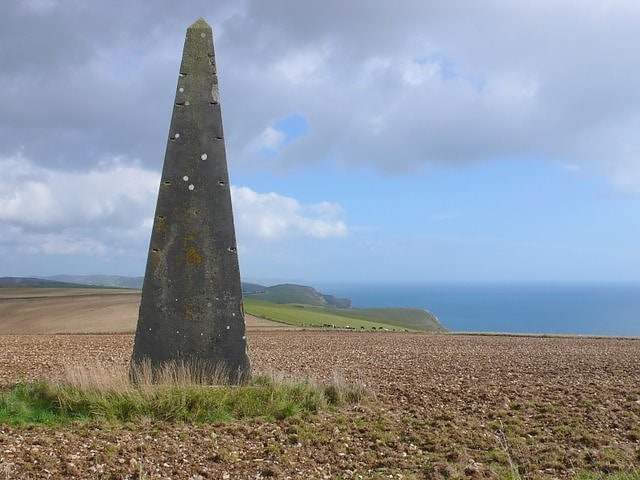
Summit in England. Chaldon Hill, also called Chaldon Down, is one of the highest hills, 178 metres, on South Dorset's Jurassic Coast in England. The summit is about 1.5 miles west of Durdle Door.
A bridleway crosses the hill just below the summit, whilst the South West Coast Path makes its way down the steep hillside to the beach heading for Durdle Door. At the summit is a tumulus and trig point. There are navigation beacons about 200 metres (220 yd) to the southeast. The hill is flanked by two coastal headlands: White Nothe and Bat's Head.[11]